The tomb of the ancient Egyptian king Tutankhamun in Luxor is one of the most famous discoveries in modern archaeology.
A new exhibition at Oxford University’s Bodleian Libraries – Tutankhamun: Digging through the Archives – marks the centenary of the British Egyptologist’s discovery Howard Carter and your team.
LOOK: The enigmatic relationship between an inmate and a prison agent and their frantic escape from a US prison.
Images remarkably lit and captured by the photographer Harry Burtonalong with letters, plans, drawings and diaries from the Carter archive, shed new light on the 10-year history of the excavation of the tomb, which was the first known intact royal burial from Ancient Egypt.
The material also challenges the perception of Carter as a lone hero, highlighting the contribution of many oft-overlooked skilled Egyptian workers.
_____________________________________
An anonymous Egyptian boy models a heavy, jewel-covered necklace found in a coffin inside Tutankhamun’s tomb, bridging ancient and modern Egypt.
Several people later claimed to be the boy, including Hussein Abd el-Rassul of Gurna, who helped Carter’s team, but none of them could be confirmed.
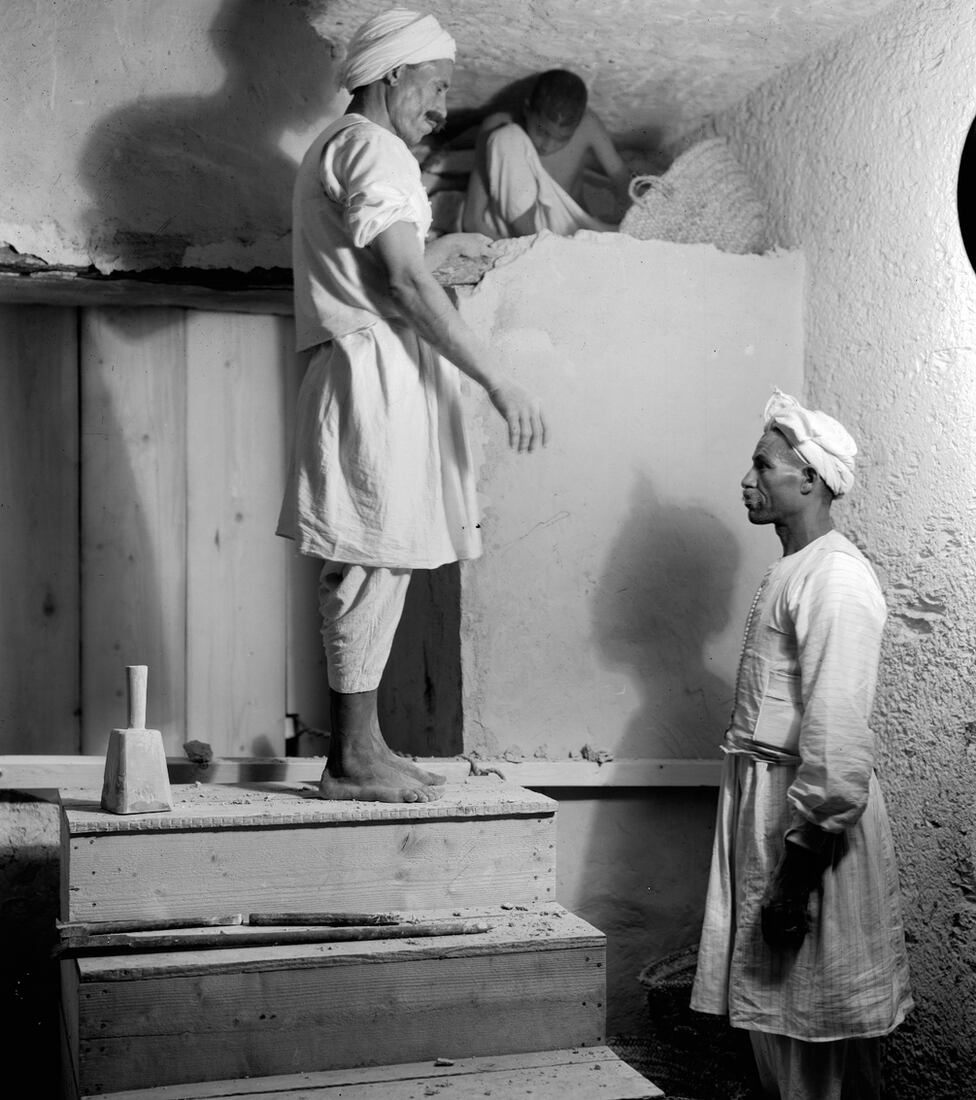
This photo is part of a series that occupies a central place in the exhibition. It shows two foremen and a boy carefully dismantling a partition to open the burial chamber.
Carter named and thanked four Egyptian foremen in his posts: Ahmed Gerigar, Gad Hassan, Hussein Abu Awad, and Hussein Ahmed Said. However, it is not possible to identify them among the workers that appear in the photos.
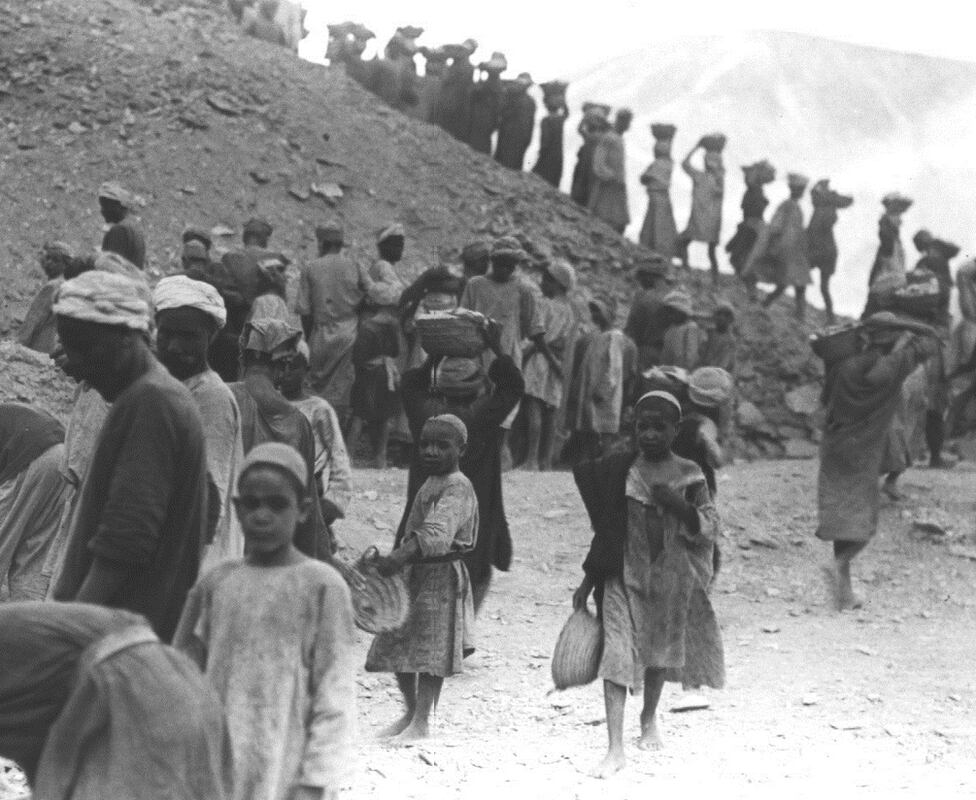
Daniela Rosenow, an Egyptologist who co-curated the exhibit, says Carter hired more than 50 local workers and there were dozens more workers at the enclave, including children.
Although their names were not recorded, Rosenow says the images challenge the colonial stereotype of the discovery made by a single man.
“Through these photographs we can see the vital contribution [de los egipcios] And that makes it clear that what we have here is only part of the story.”
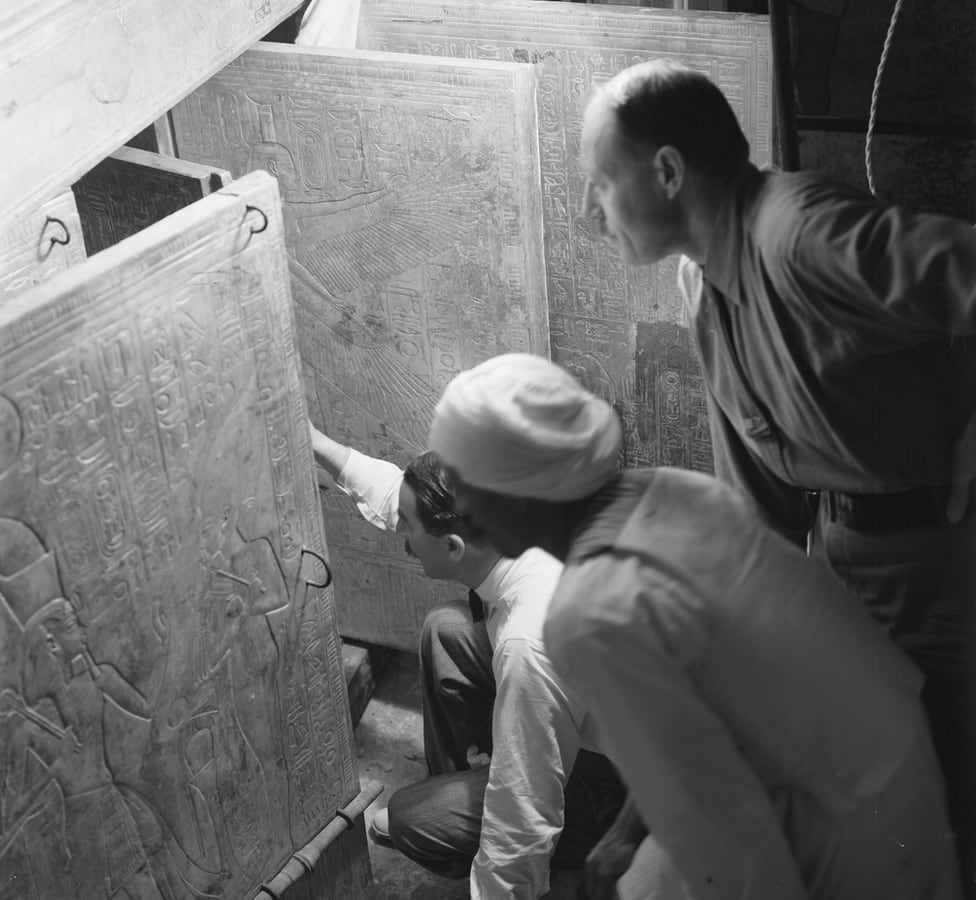
This deliberately posed and dramatic image shows Carter’s team opening the doors to a golden sanctuary.
Carter is crouched down, while his assistant Arthur Callender and an unidentified Egyptian watch from behind.
The image helped publicize the tomb’s discovery around the world and promoted Carter as an English adventurer.
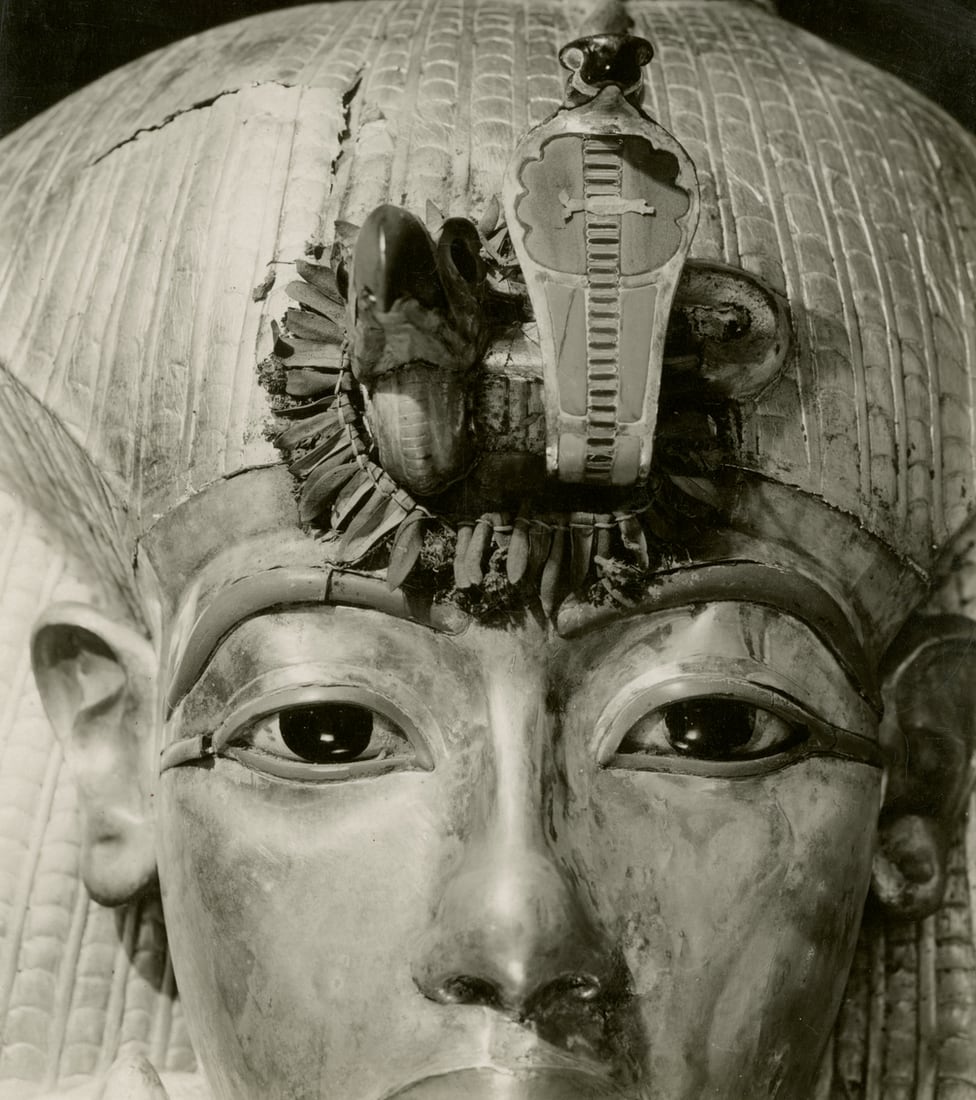
Burton’s intimate view of Tutankhamun’s outer coffin focuses on the garland of cornflowers and olive leaves that adorn the young king’s forehead.
Shortly after being exposed to the elements, the natural materials disintegrated. Its existence is now preserved only through this striking image.
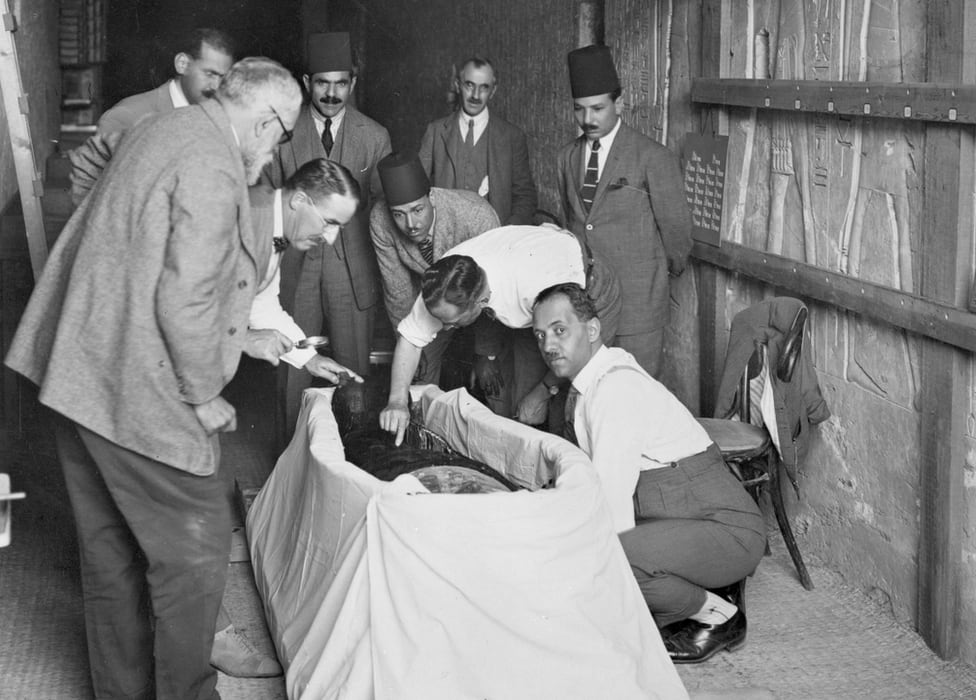
British surgeon Douglas Derry makes the first incision in the mummified body of Tutankhamun during a “scientific examination” that began on November 11, 1925.
Derry’s Egyptian colleague, Dr Saleh Bey Hamdi, is standing to his right. Carter, the French director general of the Egyptian Antiquities Service, Pierre Lacau, and an Egyptian official are also among the spectators.
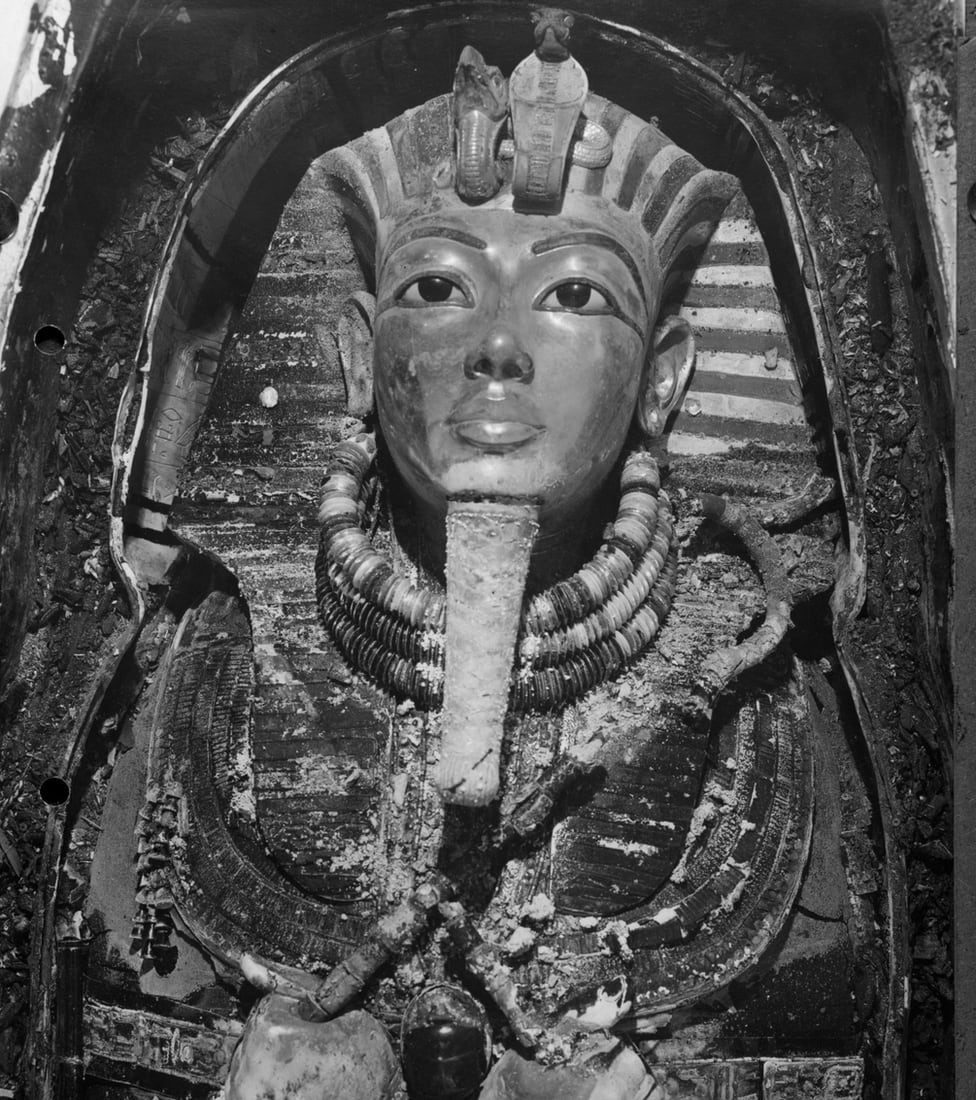
Tutankhamun’s solid gold mask, found on his mummified body, was one of the most iconic objects discovered in the tomb.
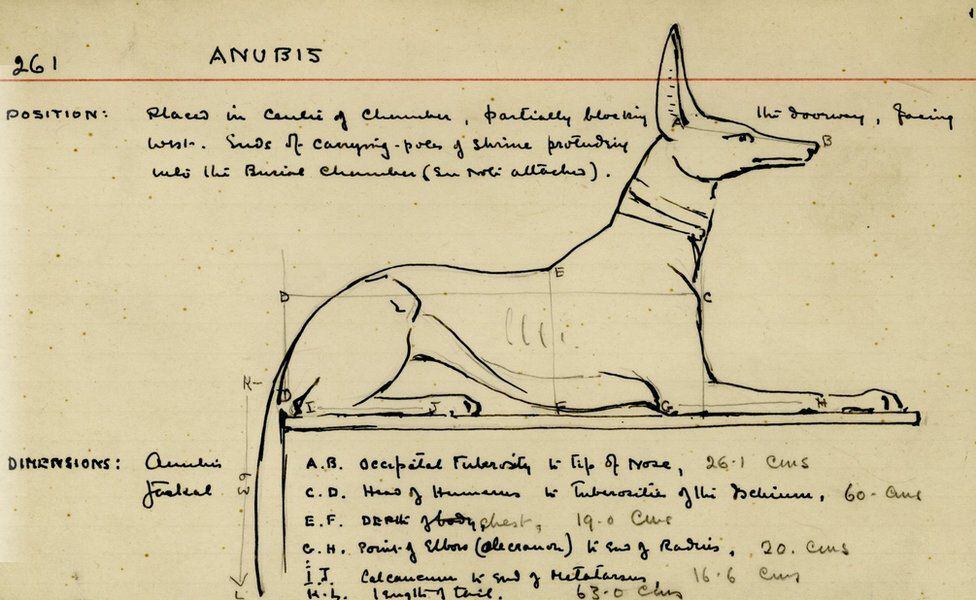
A statue of Anubis, the jackal god of the dead, is the subject of this drawing by Carter, which includes notes and measurements.
The son of an illustrator, Carter was trained as artist before transitioning to archeology without earning any formal academic degree.
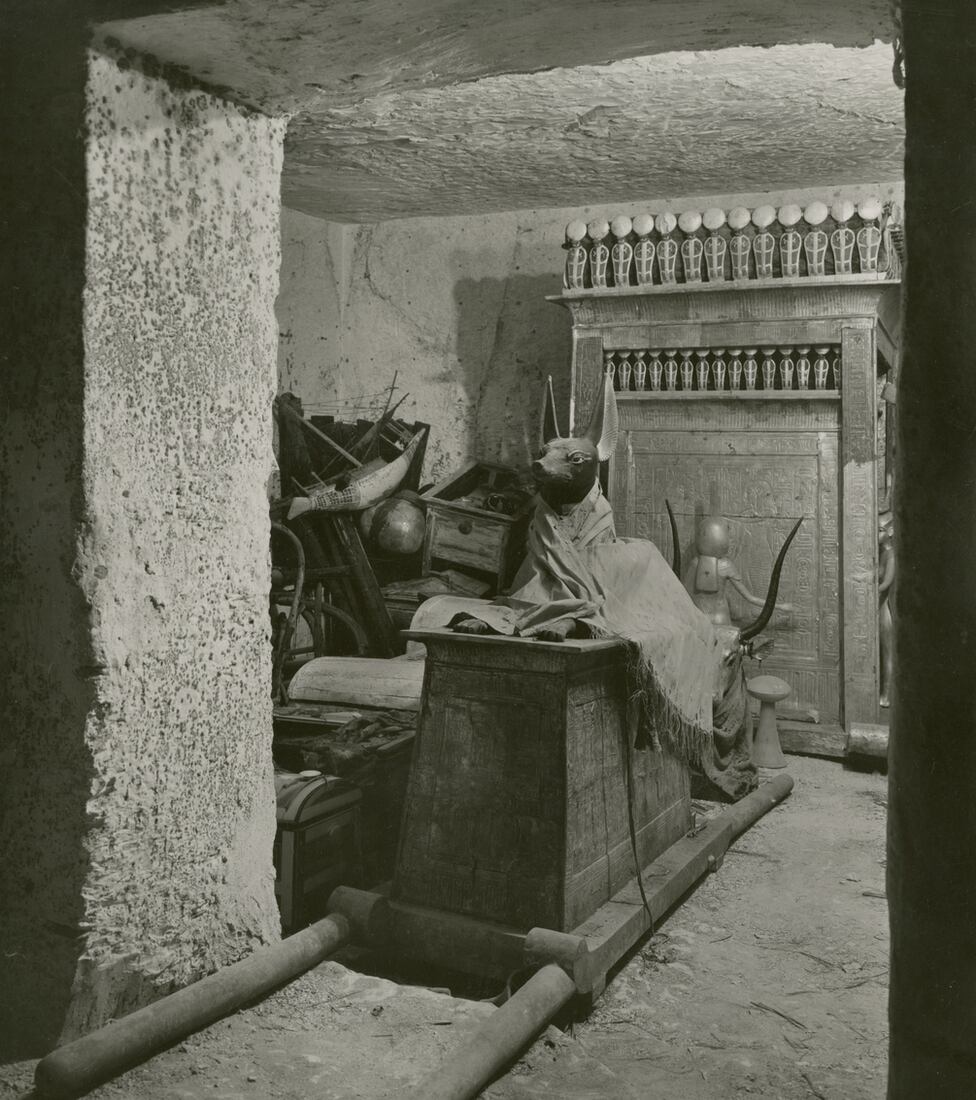
In this photograph, Burton uses concealed lighting to produce a deliberately eerie and dramatic effect, highlighting the shrine to the god Anubis.
All images are subject to copyright.
Source: Elcomercio

:quality(75)/cloudfront-us-east-1.images.arcpublishing.com/elcomercio/GE3TCMRNGA2S2MJRKQYDAORRG4.png)

:quality(75)/cloudfront-us-east-1.images.arcpublishing.com/elcomercio/Y7SXNNHDTJEV5EJPJPFSSPZEDQ.jpg)
:quality(75)/cloudfront-us-east-1.images.arcpublishing.com/elcomercio/CQSRE47KTBGAZFTT5ICUC4IZ4A.jpg)
:quality(75)/cloudfront-us-east-1.images.arcpublishing.com/elcomercio/RVWYALVQTBEKTP5PFOEG27A2ZA.jpg)
:quality(75)/cloudfront-us-east-1.images.arcpublishing.com/elcomercio/BDCCFQ5I2JHVZOKLLBZ3VG2KAM.jpg)
